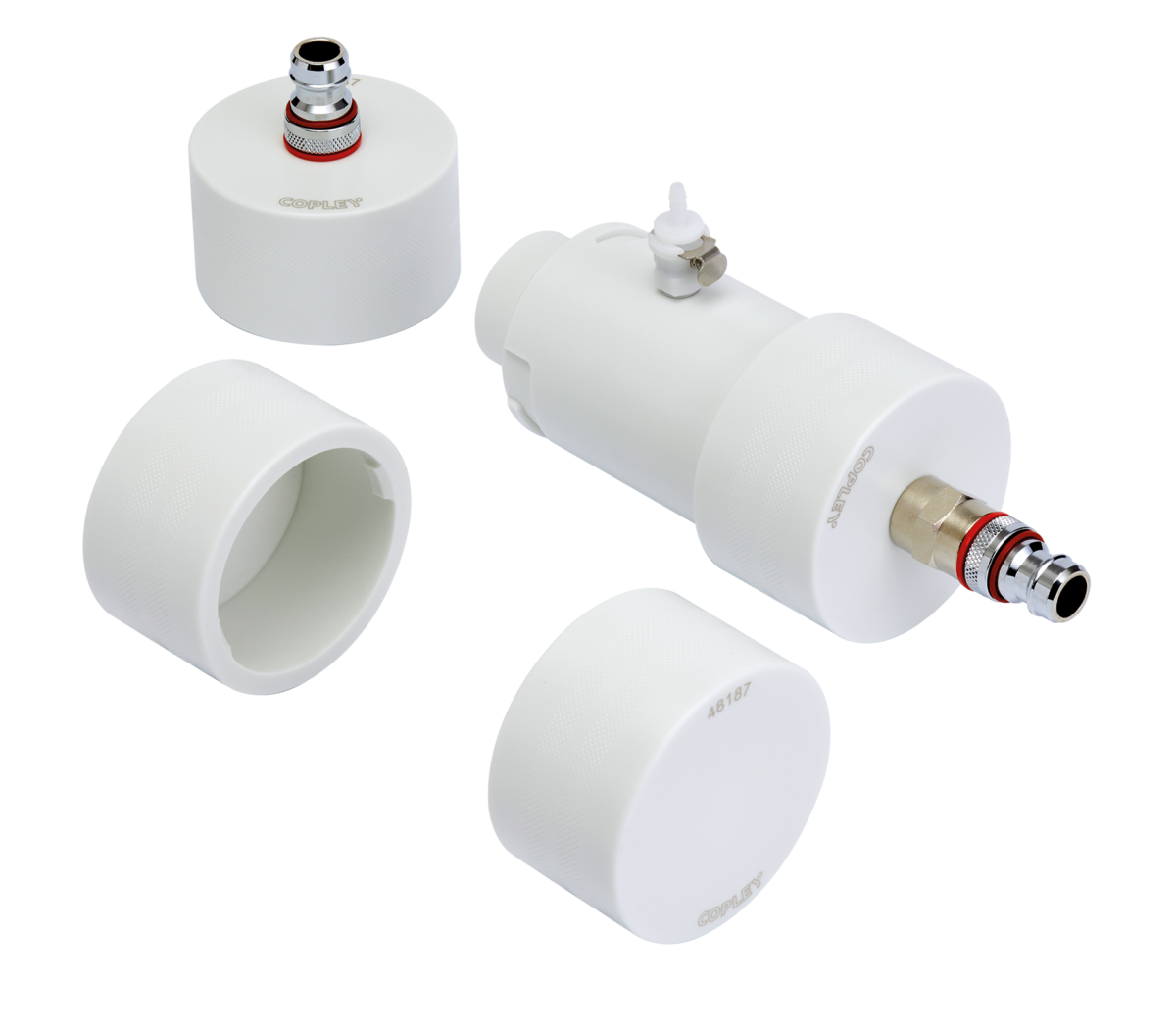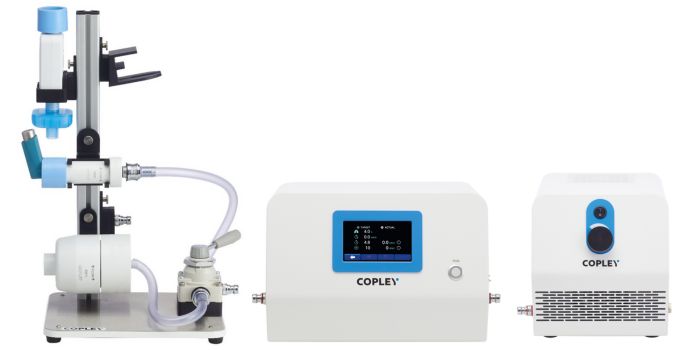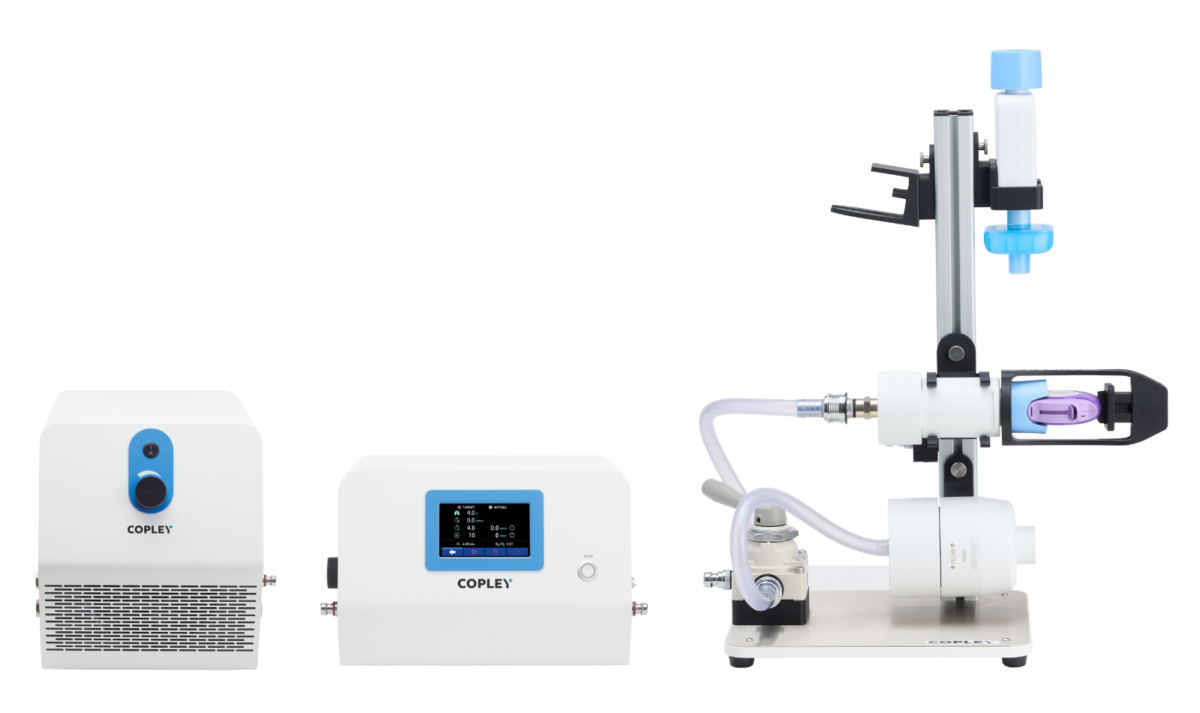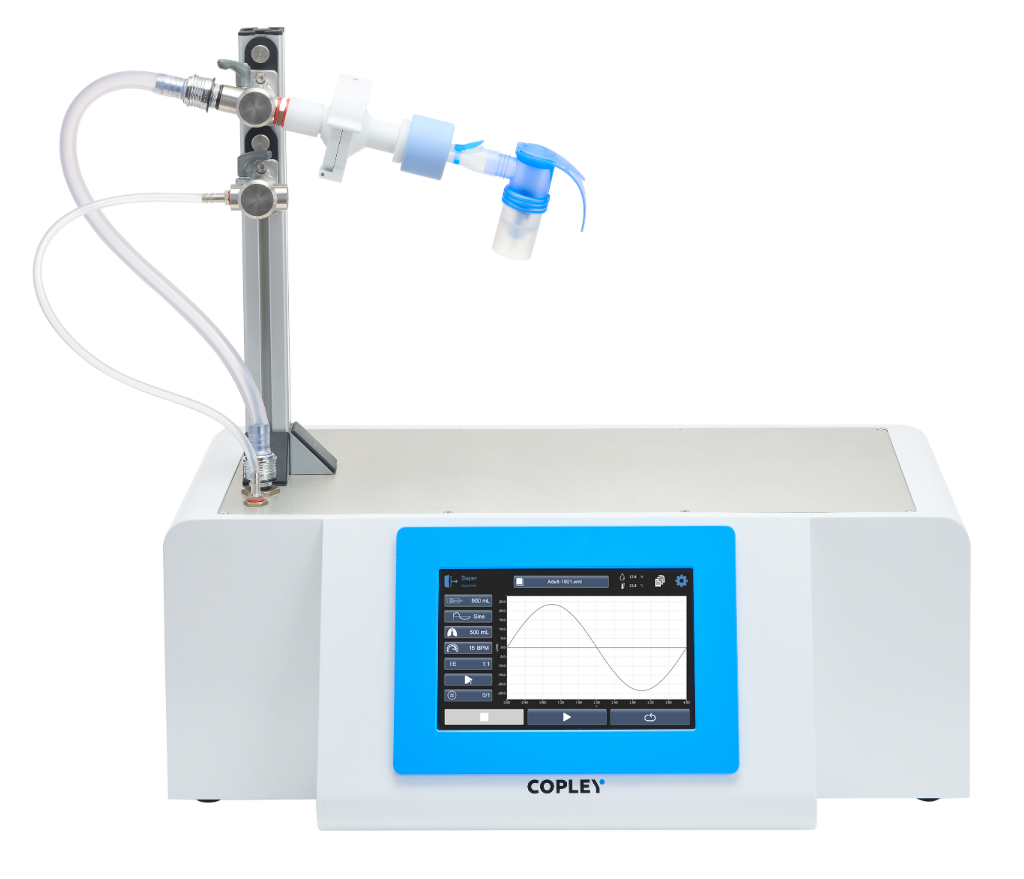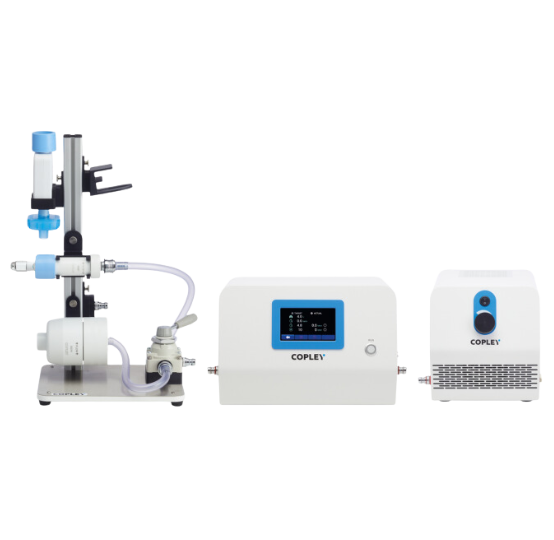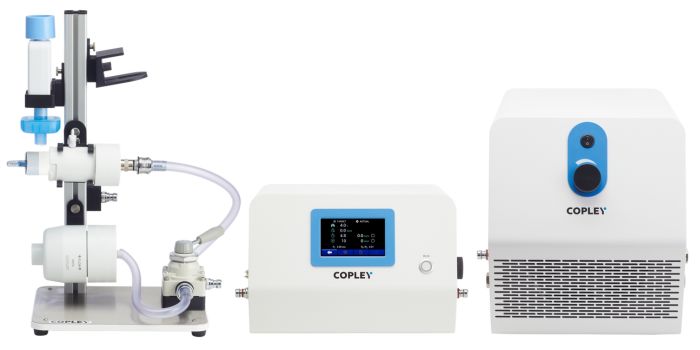Delivered Dose Uniformity
Please select an OINDP type for further information about Delivered Dose Uniformity (DDU) testing.
DDU of Metered-Dose Inhalers (MDIs)
MDI aerosol characteristics are relatively insensitive to changes in air flow rate because the aerosolisation and dispersion mechanisms are dependent on the force generated by the propellant, rather than the patient’s inspiratory effort. Therefore, for MDIs, the test flow rate is fixed at an arbitrary value of 28.3 L/min.
A vacuum pump is used to draw air through the assembled test set-up at this flow rate. However, these test conditions are not applied for DDU testing when the MDI is intended for use with an add-on device such as a spacer or valved holding chamber (VHC).
View More Details
DDU of Dry Powder Inhalers (DPIs)
The basic requirements for DPI DDU testing are the same as for MDI testing, namely DUSA, mouthpiece adapter, vacuum pump and flow meter. However, a critical flow controller (e.g. Critical Flow Controller TPK 100i) to measure the pressure drop across the device and control the flow conditions during testing is also required.
This is because most DPIs are passive breath-actuated devices which rely on the patient’s inspiration rather than a propellant for dose aerosolisation and delivery. The testing of DPIs is further complicated by the fact that different inhalers provide varying degrees of flow resistance, i.e. some require more effort to inhale through than others.
View More Details
DDU of Nebulisers
The delivered dose testing of nebulisers is carried out to determine the total amount of drug a patient might be expected to receive during a treatment period, rather than through one inhalation. Given the mode of operation of nebulisers, well-defined tidal breathing profiles for specific patient types are specified for testing.
The two tests specified in the Pharmacopoeias to characterise delivered dose, Active Substance Delivery Rate and Total Active Substance Delivered, are based on tidal flow conditions generated by a breathing simulator, as opposed to fixed flow rates.
View More Details
DDU of Soft Mist Inhalers (SMIs)
Both MDIs and DPIs suffer from the same two inherent problems: low lung deposits (typically 5-20%) and dose variability (often due to patient difficulties in coordination or inspiration). Aqueous Droplet Inhalers (often known as “Solution Metering” or “Soft Mist” Inhalers), are a new generation of inhaler designed to overcome these problems.
Since they are active, aqueous-based devices, the DDU testing of ADIs is similar to that of MDIs, with testing carried out at a constant flow rate of 28.3 L/min.
View More Details
DDU of Nasal Products
Recent developments in nasal delivery systems has resulted in greater focus on different uses for drug delivery. With great potential for rapid drug absorption into the turbinates and lymphoid tissues located at the back of the nasal cavity, focus has shifted to absorption into the systemic circulation and central nervous system for a wider range of treatments.
There are three conventional technologies for nasal delivery: metered spray pumps (aqueous-based), nasal aerosols (propellant-based) and powder-based.
View More Details
Related Services



Training
We offer a range of training courses, presentations and seminars covering a wide range of topics.
Find Out More


Servicing
A comprehensive range of both in-house and on-site product servicing options are available
Find Out More


Support
Our team of experienced technicians and engineers are on hand to help and advise
Find Out More

